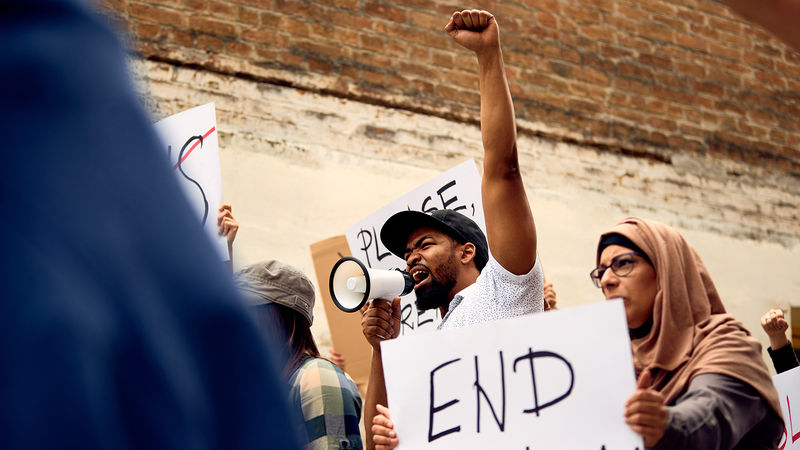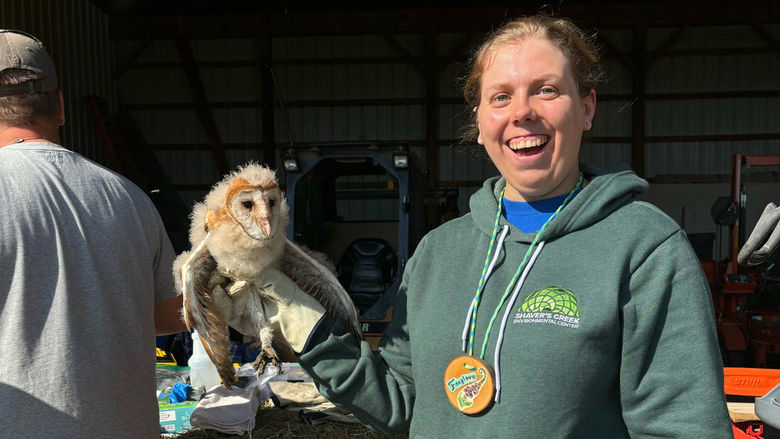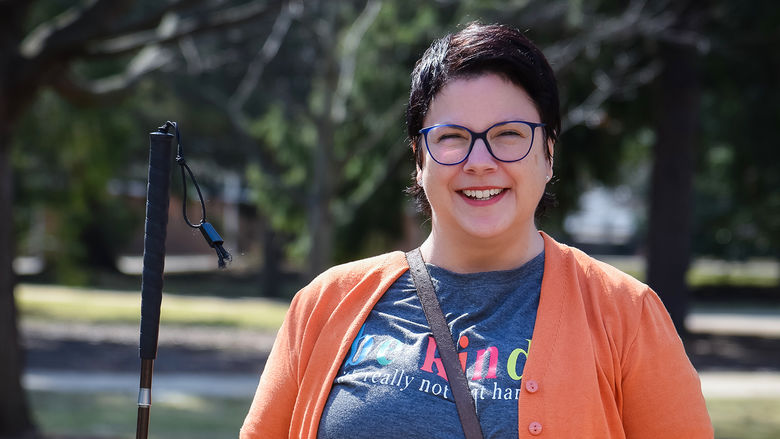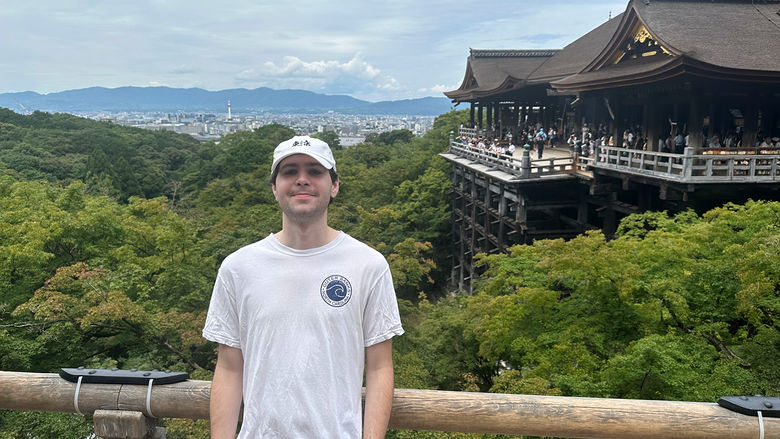

This dialog contains the full navigation menu for this site.

“I don’t think anyone can read it and ignore it,” says Jenae McGill, a criminal justice major at Penn State Altoona, when talking about the book Systemic Racism in America: Sociological Theory, Education Inequality, and Social Change edited by Rashawn Ray and Hoda Mahmoudi. McGill and her peers in a research lab, Woodnie Andre, Makaylah Bangura, Marianna Di Balsamo, Deyana Dye, and Hannah Jean-Pierre, all collaboratively wrote a review of the book with Dr. Nicholas Rowland, professor of sociology, who co-runs the Integrated Social Science Research Lab (ISSRL) with Dr. Nathan Kruis, assistant professor of criminal justice—who, incidentally, was once a student in that same lab as an undergraduate himself. As we shall see, because race crosscuts so much of contemporary American life, this is a near-ideal project for a group of multidisciplinary students working in an interdisciplinary research lab.
Bangura, a nursing major, says that the concept of a book review came up in the spring 2022 semester at Rowland’s suggestion, but it didn’t move forward right away because, thanks to COVID and issues with the global supply chain, the book publishers were delayed in finalizing the book. “He [Rowland] brought it back up in the fall, saying we’re ready to hit the ground, and he asked if anyone else wanted to come along. It fit really well with my values and ideals.” Andre, a biobehavioral health major, was attracted by the subject matter: “We had a lot of projects [to consider], but I chose the book because it was more interesting. The book itself educates people.”
Dye, another nursing major, took a more practical view; she knew “I was going to get a publication out of it,” she says. But, while “the publication is important, it’s not solely why I’m doing it. The topic is interesting. It’s a problem that we need to discuss, a problem that people need to know about.”
Actually, the student reviewers clearly found the book more than just “interesting.” McGill calls it “very blunt. Good for all readers, especially coming into college.” She appreciates the straightforward text. “The book comes out and says we don’t even need people to be racist [for racism to persist in the US] because our system is set up to be racially inequitable. So many people say, ‘I’m not racist.’ White people don’t have the same struggles.” Dye’s view is also personal. “Yes, I am a black woman, and, yes, I’ve experienced a lot of these things, but it opened my eyes to a lot I hadn’t thought about.” McGill was surprised about what she read because she is “aware of some of it, of course, but not everything. Everyone knows our country is racist, but not the extent this book went.”
This was the second ISSRL book review project for Di Balsamo, a pre-med major with a Spanish minor, now at University Park. For this book, she says, “you get information you wouldn’t get elsewhere. It used statistics in a way that’s not so hard to read. The author used statistics and explained the concepts. ‘Here’s my opinion; here are the facts.’” She admits it was enlightening. “You reevaluate your daily life, things that you don’t even think about. I do this in my daily life.” After reading the book, she is making an effort to change her own behaviors. “My favorite takeaway was they don’t just say what’s wrong; they say how to fix it.”
Andre brings a unique perspective to the group. She was born in Haiti and only came to the United States in the tenth grade. Her experiences with racism in the United States surprised her, she says. “I didn’t realize that racism is even in education.” She recalls a conversation with a teacher who told her, “If you’ve applied for a job and your name is difficult to read, you’ll less likely to get a call back from an interviewer.”
Cooperation and participation are very important when doing a collaborative book review. Di Balsamo describes the process: “Every week, we went through each chapter individually and made notes on what we liked and didn’t like. And then, we would meet with one or two others every week. You could just stay for the discussion or join the writing.” For herself, she says, “I contributed more to the structure—what we liked/didn’t like.” She says that “with a group discussion—five or six people—you get a nonbiased opinion of the book. We were able to be a speaking voice.”
Rowland notes, “It is really all about the students—harnessing the research enterprise of our great university for the purpose of creating community, inclusion, and belongingness through scholarship.” In fact, “this model of collaboratively authoring publishable book reviews with undergraduate students is something we’ve pioneered in the research lab [ISSRL], and we have the publications to prove it. I’ve personally co-authored around two dozen book reviews with undergraduate coauthors during my time at Penn State Altoona. I have given presentations about our technique and published articles in national and international journals about the origins of our thinking here in the lab.” Rowland started at Penn State Altoona in 2007 and notes that this undergraduate research lab is the one thing that he is the proudest of creating as a faculty member.
The student reviewers endorse working in the ISSRL. “It is a great experience being in the research lab,” Dye says. “I think I wouldn’t be getting the experience as a regular undergrad. What to put in a resume, how to analyze data—that preps you for grad school.” Andre adds an emotional component: “Being in the research lab put me in a place where I’m comfortable to talk about racism without hesitation.”


